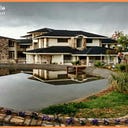Five Ways to Design a School for Brain-based Learning
All learning relies upon the brain, but the brain doesn’t function alone. Brain-based learning is built upon the principle that each one learning is physiological, relying on all aspects and functions of the physical and neurological processes, together with feeling, memory, and sensory experience.
Designing a faculty for brain-based learning suggests that making areas that address students as complete individuals, complete with bodies, feelings, and innate needs, rather than minds waiting to be filled with information.
Layout
The most effective brain-based learning environment provides space during which to move around and socialize, creating the traditional classroom style of rows of desks highly ineffective during a learning atmosphere.
Instead of creating rows, academics ought to consider a circular classroom, during which students will see each other and interact with each other. A circular set-up also leaves the central house for movement and activity. Per the Florida Education Association, physical activity has been shown to lower student stress and produce new neurons, which, in turn, enhances the training experience. So, the more space lecturers leave in a schoolroom, and therefore the more students get to their feet, the better.
Comfort
The most effective learning happens once students are challenged, however not vulnerable, according to learning website Understanding, however faculties are notoriously trying environments. Per the Florida Education Association, studies conducted on the staff and students found that up to 50 % of scholars in several U.S. schools experience moderate to severe stress daily.
Administrators and academics got to address these problems in each style and also in response to issues like bullying, issues at home, and students’ fear of failure. Youngsters don’t respond to dull, clinical school rooms with hard seats. Educators will hunt down comfortable alternatives to desks, like bean bag chairs and floor pillows, that students will switch to throughout certain parts of the day for a break.
Color
Brain-based learning requires stimulation of quite one part of the brain at a time. Young students, for example, use visual clues to help in their comprehension of reading; however, all students enjoy having more than one of their senses engaged throughout the training method.
When possible, it’s best to induce faraway from single-colored desks and cream classroom walls. Bringing the whole spectrum into the schoolroom can facilitate to keep students’ brains alert and interested.
Emotional connection
Brain-based education integrates feeling into the training method. Students are reaching to feel anyway, and, according to a report on engaging students with brain-based learning by the Association for Career and Technical Education (ACTE), students experience both positive and negative emotions once being exposed to new info. It’s up to educators to form specific instruction that lends toward positive feelings. Setting up a schoolroom in a way that encourages face-to-face interaction between teacher and student will facilitate building a connection that helps students feel more supported in their learning.
Immersive experience
According to ACTE, the brain processes true experiences otherwise than fabricated scenarios. That’s why brain-based learning encourages realistic experiences that permit students to experience what they’re learning about firsthand. Field trips are helpful during this regard, however thus are active classroom activities, like visual art, brain-based games, and role-playing.
Some subjects also lend to immersive classrooms. Decorating an overseas language school room within the style of a country in which the language is spoken gets children in the mindset of what they’re near to learn. It additionally provides visual cues that help students comprehend the knowledge they’re being tutored. Even, several boarding schools in Dehradun, Ecole Globale is one such school, for more info, visit the ecole globale, are now conducting other activities in the school, along with an academic curriculum that involves brain activity to solve the given tasks.
Brain-based learning may be a growing trend. Schools are opening up spaces and making environments during which real-world, hands-on experience is at the forefront, and studies are showing that, once it involves comprehension and retention, these modern brain-based environments are more effective than tradition.
Wesley Fryer, Jeremy S. Cook, Joe Brooks, It's About Time, Scott Traylor, Paul Fishwick, Joachim, McGraw-Hill, Processing Foundation, Mark Barnett
